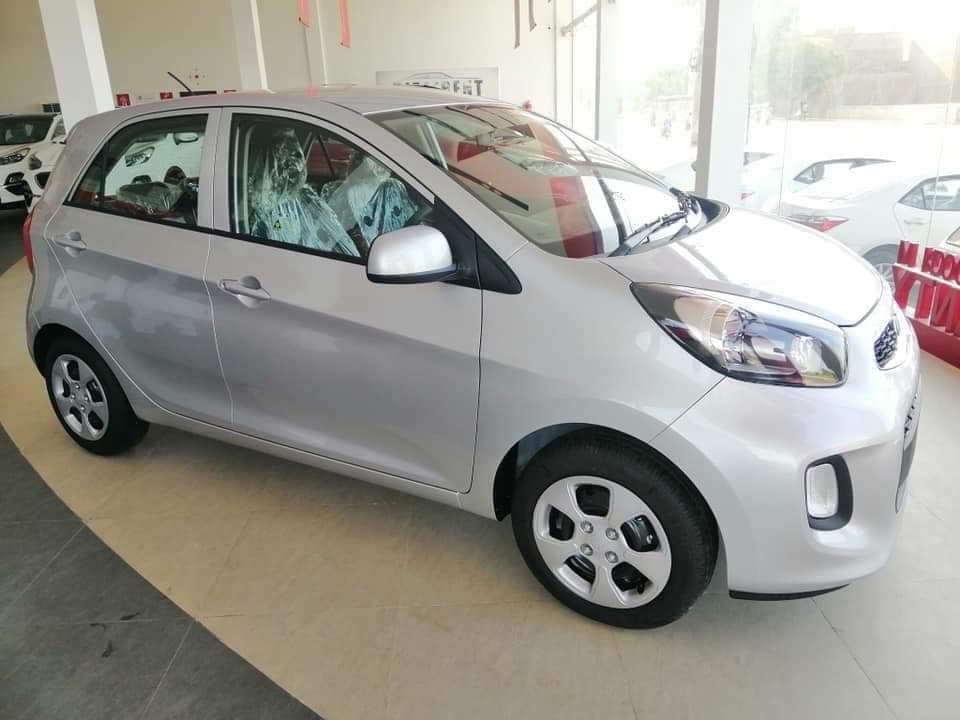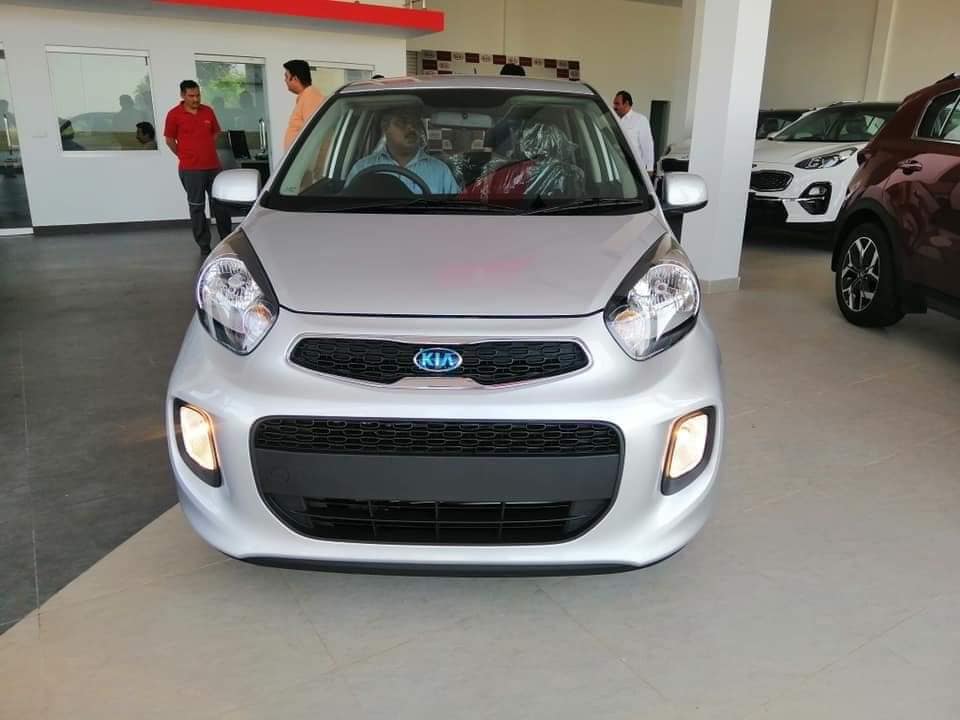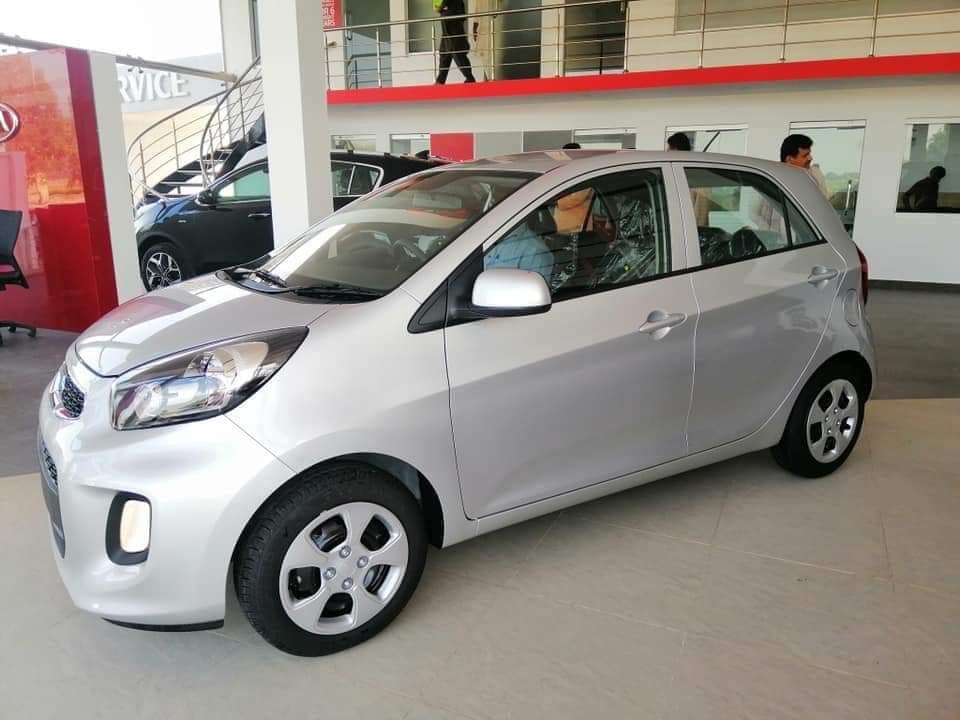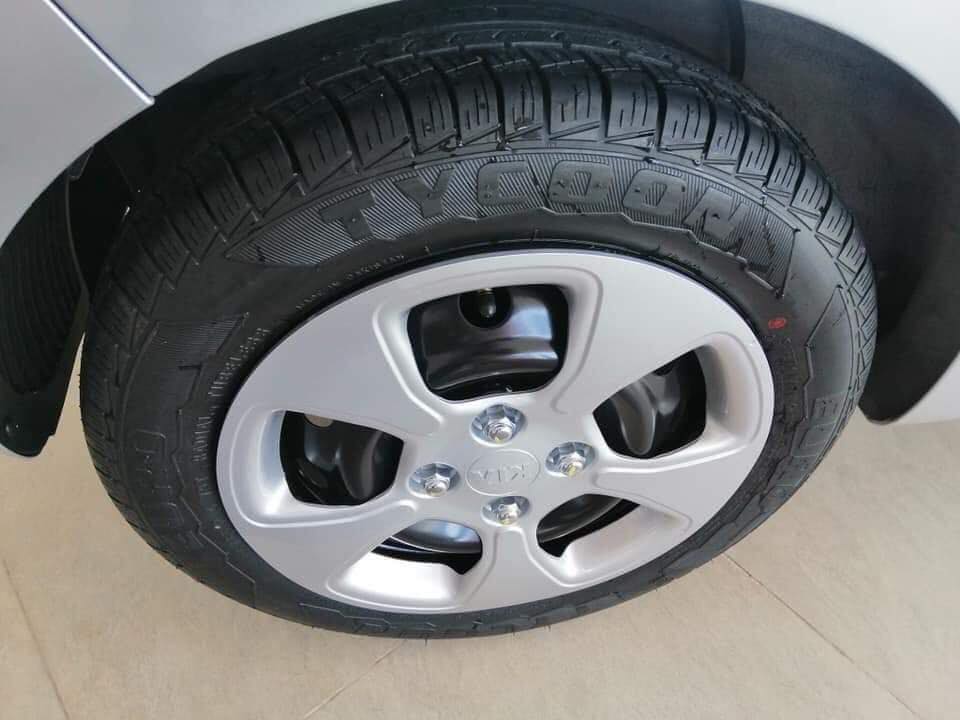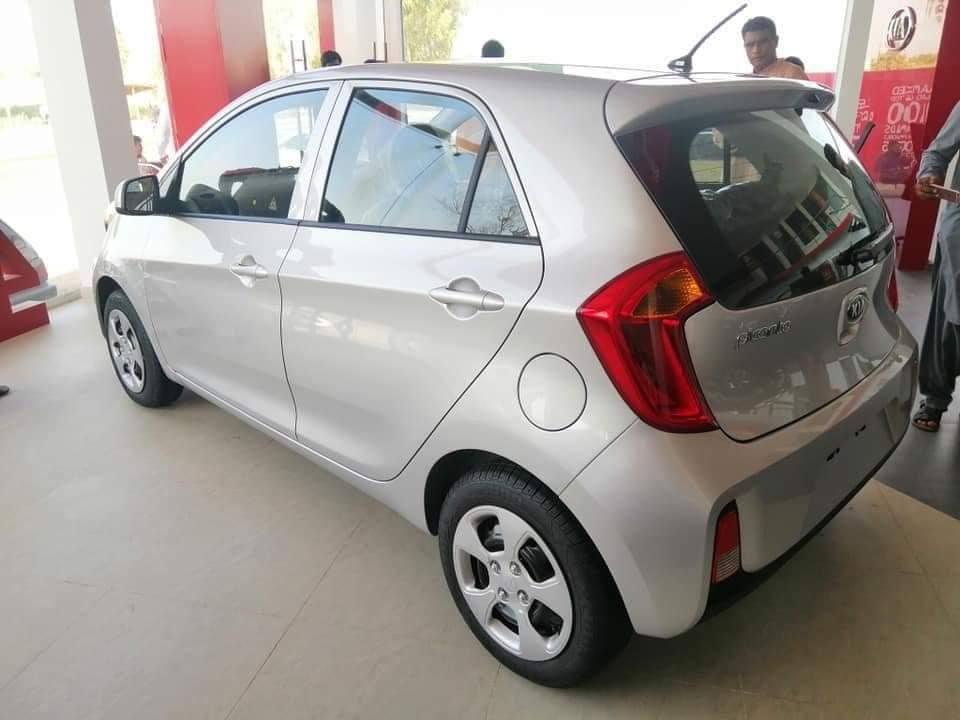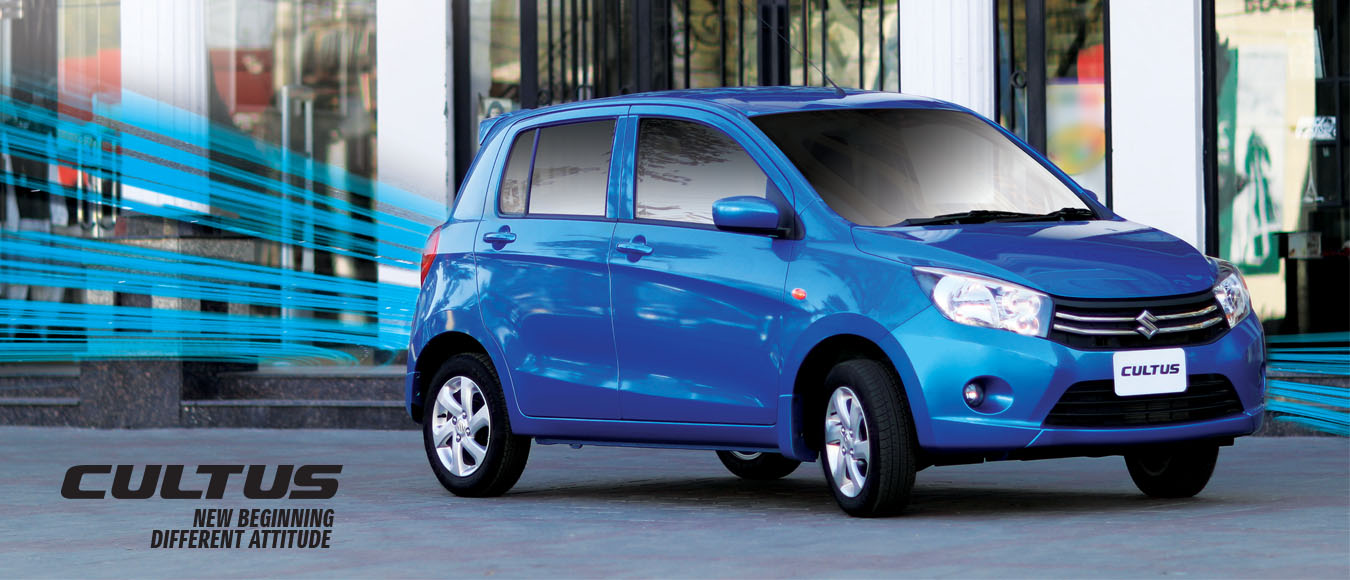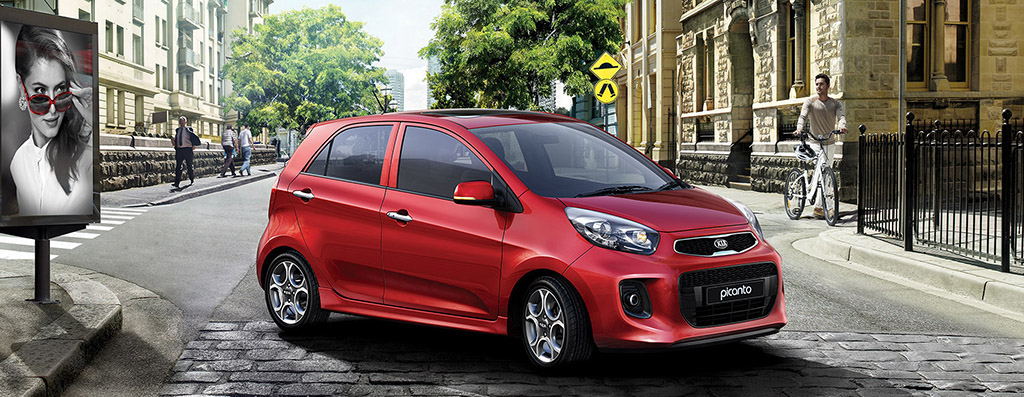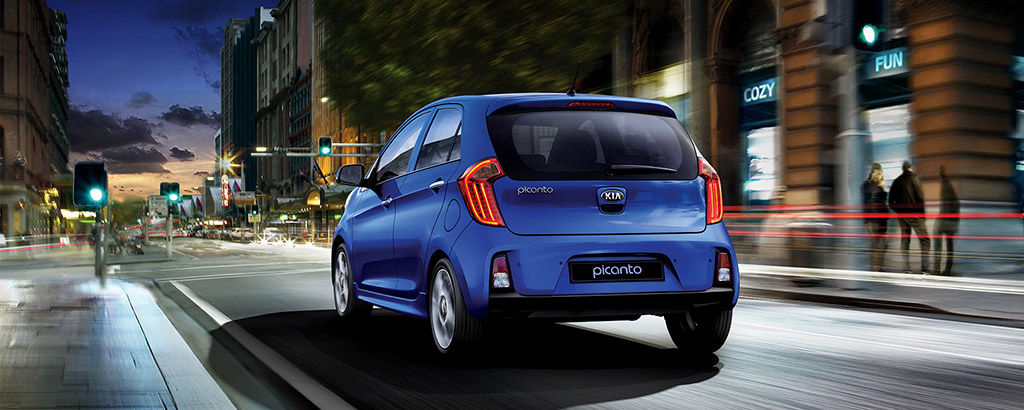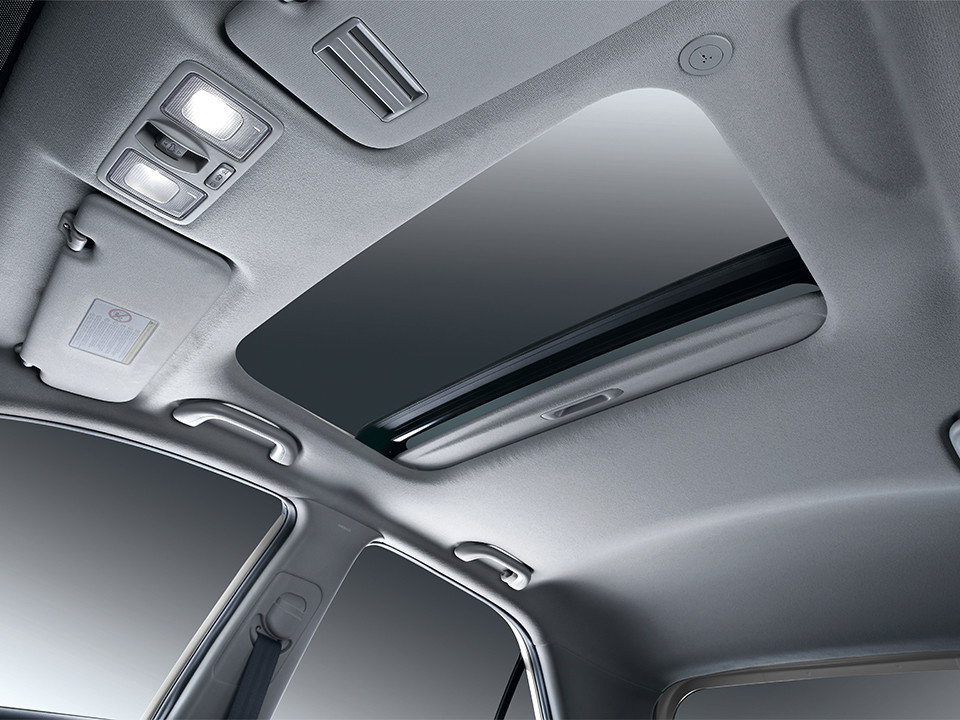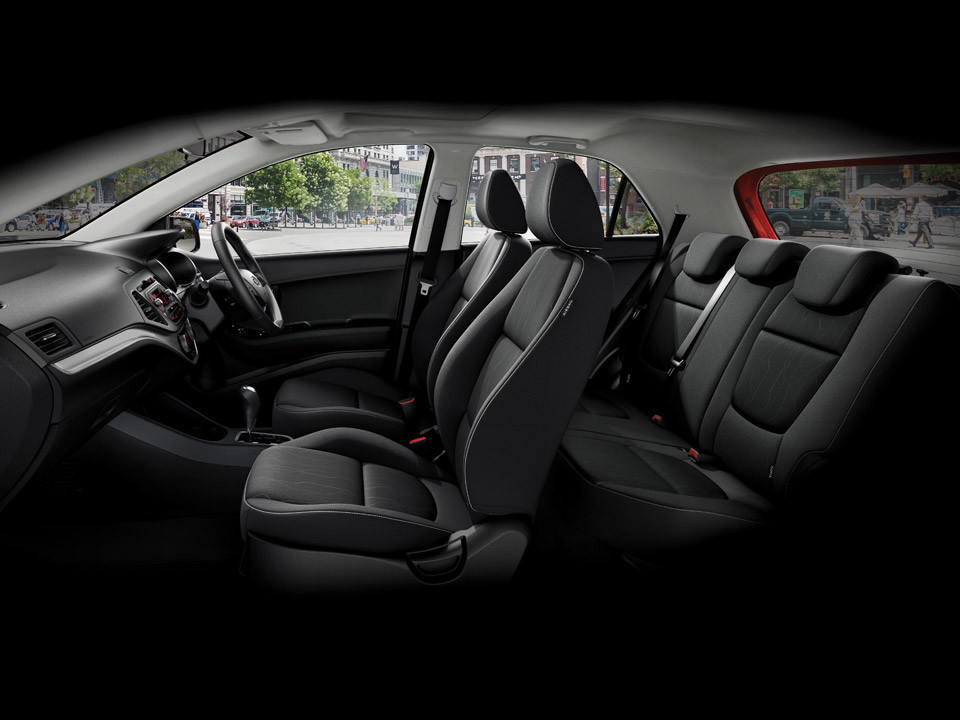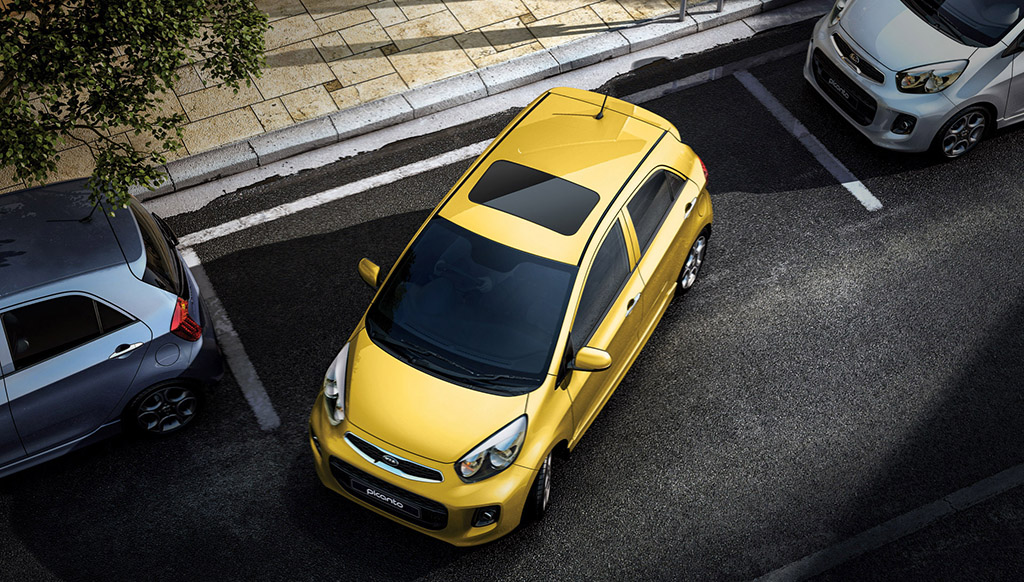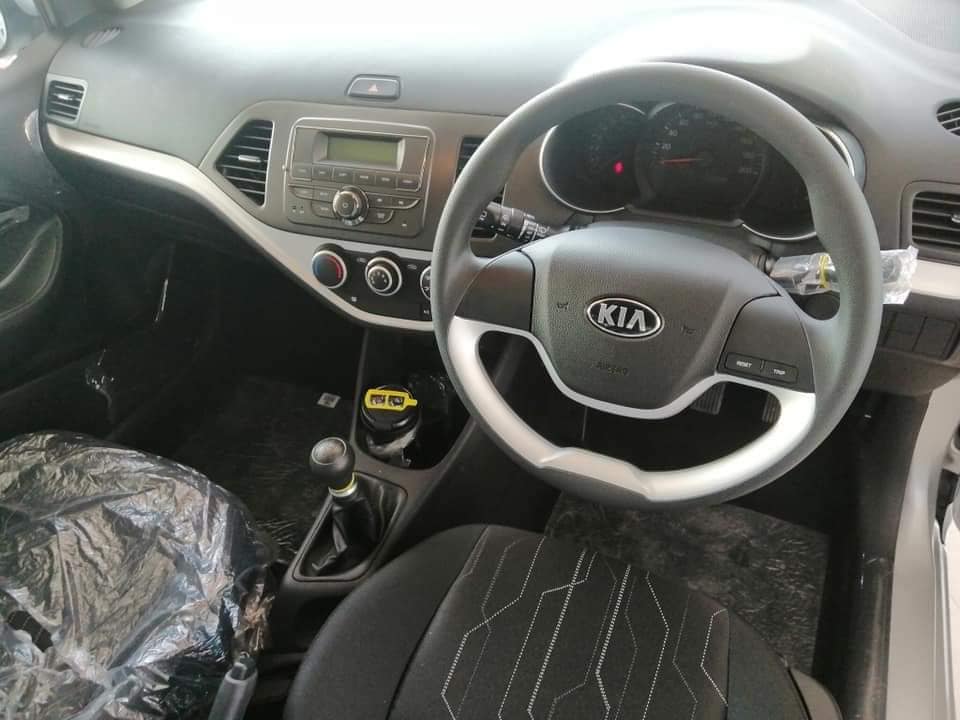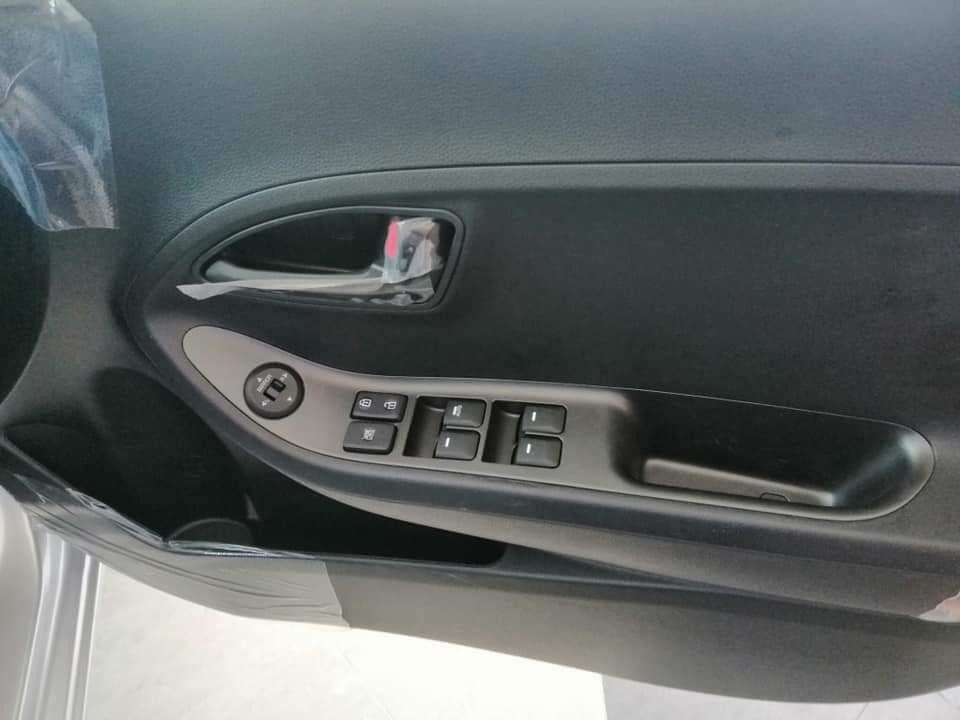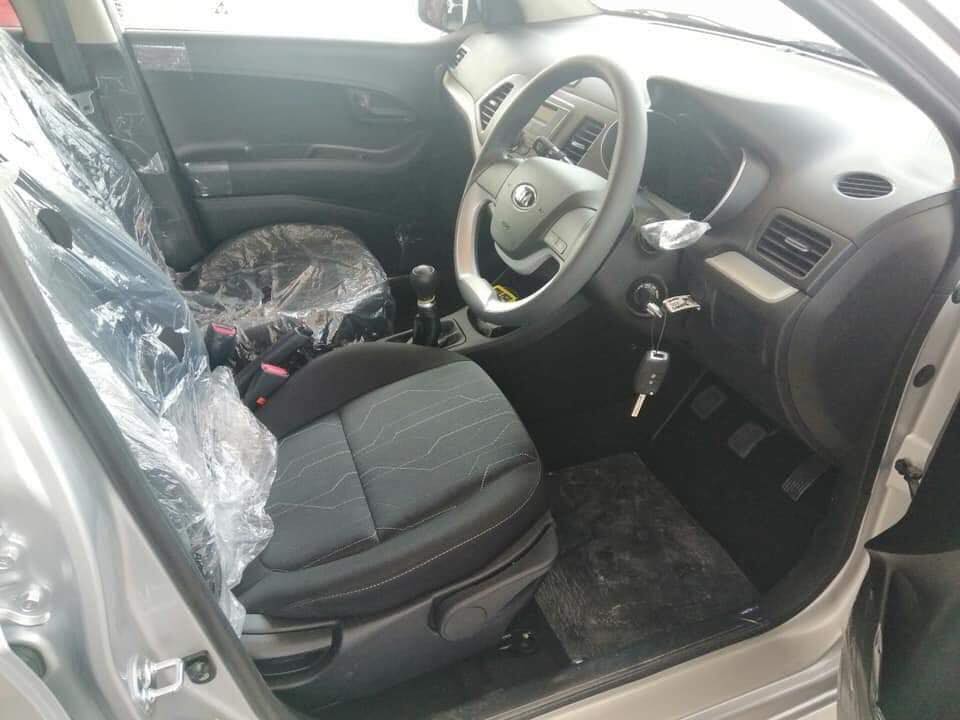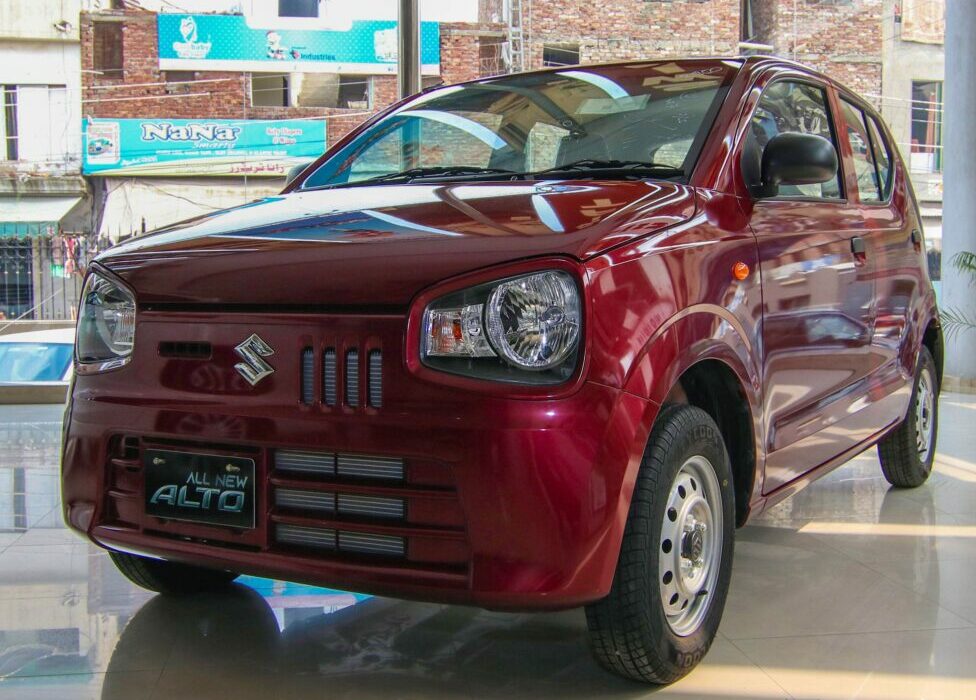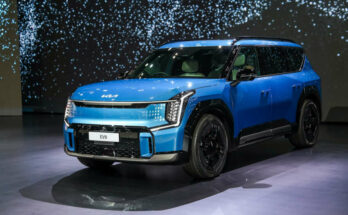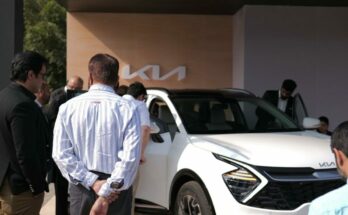Kia Lucky Motors began accepting bookings of their 1000cc Picanto hatchback earlier this week. Having made their comeback last year, this is the first car in their domestic portfolio that is targeted towards mass-market buyers.
Related: Kia Picanto Price Revealed- Booking Open
Kia launched the Grand Carnival Luxury MPV last year, along with the Frontier K2700 commercial pickup while it has recently launched the Sportage SUV in our market. Although the public was anxiously waiting to have a mass-produced option in a small car segment other than Pak Suzuki, their feedback on Picanto pricing is largely negative on social media.
(Pictured above: Local assembled Kia Picanto)
Kia Picanto is priced at PKR 18.99 lac for the manual and PKR 19.99 lac for the automatic version. As for features and equipment, there is no difference between the two versions apart from the transmission. Key features include dual airbags, power steering, power windows, power mirrors, back wipers and front & rear fog lamps, etc.
Related: How Kia Picanto Stacks Up Against Suzuki Cultus
We received a lot of feedback on the pricing, the majority of people were foreseeing a price ranging between Pak Suzuki Wagon R and Cultus. However, this price tag was certainly not anticipated by many, which is even more than that of Suzuki Cultus manual and AGS variants.
The sole purpose of the Auto Policy 2016-21 was to create competition in the sector and give people choices other than what the existing Japanese trio sells in the market. So far the newcomers were either focused on offering over expensive SUVs & luxury MPVs or commercial pickups and minivans. Kia Picanto was supposed to be the first product from a mainstream automaker that stacks up against the existing competition. So understandably, the expectations were quite high.
Related: Yogomo 330- The Kia Picanto Clone in China
However, even if the newcomers who are entitled to concessions under Greenfield investment status are not able to offer something that’s within the range of the masses, then it means something somewhere is not right.
Public Expecting a Lower Price Tag
There were some reasons why people were anticipating a lower price tag for Picanto. In addition to concessions under Greenfield status, the company has introduced an out-gone second-generation model which was discontinued elsewhere in 2017. Picanto is currently in its third generation in global markets so it was generally believed that introducing an out-gone model will help Kia to price it lower.
(Pictured above: International-spec Kia Picanto)
Then a lot of features found on the international-spec versions have been taken off. Features such as alloy wheels, sunroof, integrated turn signals, multi-function steering wheel, LED tail lights, etc have been stripped off the locally assembled model.
Taxes & Duties Affect the Prices
Government duties and taxes also play a pivotal role in pricing an automobile. In Pakistan, nearly 30% of vehicle prices account for government taxes. To add to the misery the recent imposition of FED on small cars has pushed the prices of cars to an unrealistic level.
Related: Why Kia Sportage? Asif Rizvi Explains
According to the CEO of Kia Lucky Motors Mr Asif Rizvi, the government should focus on enhancing the production volumes. Charging small amounts of taxes on larger volumes ensures generating healthy revenue rather than imposing heavy taxes on an already small production volume, as a result of which the sales have further declined giving a major blow to the revenue.
Assembling vs Manufacturing
Another reason is that vehicles are assembled in Pakistan rather than being manufactured. This means major components need to be imported in order to be put together in assembly plants. Although existing local assemblers claim to have achieved 70% localization, only components such as electrical harnesses, bumpers, seats, rims, etc are made locally. Complex parts such as engine & transmission etc are still imported at large.
(Pictured above: Local assembled Kia Picanto)
This dependency on imported components & kits to assemble vehicles locally casts a negative effect on pricing as it gets heavily dependent on exchange rates. According to the Chairman of the Pakistan Motor Dealers Association Mr. H.M. Shahzad, local assemblers spent $818 million on importing complete and semi-knocked-down kits in 2018-19. Proper localization will ensure lower manufacturing costs and will also help bring down the prices of vehicles.
What Government Must Do?
The government needs to play its part in supporting the ailing auto industry. Sales are already witnessing a dreadful downfall and there is no hope of recovery in the near future. Also, policies need to be in line with the betterment of the industry at large, shifting policies and introducing new taxes every now and then has already dented the auto sector quite badly.
Related: Pakistan Auto Policy: What Needs to be Done?
And it’s not just about letting newcomers in, it’s important that they stay and generate healthy competition. Otherwise, during the last couple of decades, several automakers came with a bang and packed up within a few years. So obviously this is something we don’t want to witness again.

The core purpose of the Auto Policy was to give the public an “option” other than what the existing players offer and to loosen the grip of 3 Japanese players in the market. However, if newcomers keep on introducing the likes of 18.5 million Santa Fe, and 2 million ex-generation Picanto particularly when existing hot-selling option(s) with similar specs are available at a comparatively lower price, what’s the point in offering something that nobody is going to buy?
Related: Hyundai Santa Fe for PKR 18.5 Million- What Else Can You Buy?
Pricing a new car more expensive than the existing hot-selling options isn’t a wise move at all. Newcomers need to sell in volumes in order to survive; otherwise, if they keep on selling a handful of expensive units, we are afraid history might repeat itself. Serious decisions need to be made before it’s too late.

A computer animation professional with over 23 years of industry experience having served in leading organizations, TV channels & production facilities in Pakistan. An avid car enthusiast and petrolhead with an affection to deliver quality content to help shape opinions. Formerly written for PakWheels as well as major publications including Dawn. Founder of CarSpiritPK.com

